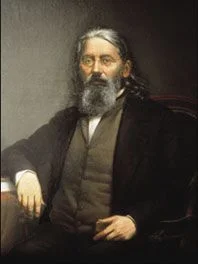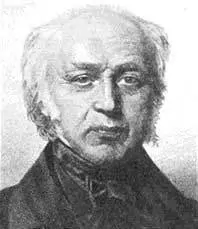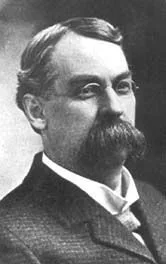Our Expanded Homeopathic Primer
©1999-2019 Larry A. Bernstein, VMD, PCHom.
Blue Link – General Information on a topic or Glossary
This paper is © copyrighted and may only be used for information purposes. It is the sole property of the author and any commercial use or reproduction without written permission is prohibited.
A description of Homeopathy and its basics is not an easy thing to do in a few words and do it well so please keep an open mind and realize that an entire discipline cannot be distilled down to a few pages.
It is important to get a brief historical and philosophical perspective from which to begin. There is a historical basis for homeopathy that dates back to the ancient Greeks and an excellent discussion of this can be found in Thorson’s Encyclopaedic Dictionary of Homeopathy by Harald Gaier and a much more detailed discussion can also be found in The Emergence of Homeopathy – Alchemy into Medicine by Elizabeth Danciger..
History of Modern Homeopathy
For our purposes, we will jump to the late 1700s and the teachings of Dr. Samuel Hahnemann (1755-1843)
Dr. Hahnemann is considered the father of homeopathy and was a physician who studied in Austria. He became more and more distressed and disillusioned over the barbaric medical practices of the time. Please remember that this was a time when it was common to use things as bloodletting, oral heavy metals like mercury, poisons like arsenic and violent purgatives. The venereal diseases of Syphilis and Gonorrhea were also rampant in Europe.
Hahnemann began to look for a gentler, more natural method of curing the patient and came to realize that symptoms are merely an expression of the underlying disease and not the disease itself. He wanted a way of stimulating the body to heal itself. We will go into this in more detail later. He wrote what is still the definitive work on homeopathy, the Organon of Medicine in 1810. He then added five more editions, volumes of cases, lesser writings, practiced and taught until his death. His students expanded his work and carried on his teaching. That is why names like Dr. Hering , Boenninghausen and Kent are synonymous with homeopathy.
Similia Similibus Curentur” (“Let likes cure likes”)
The basic principle of homeopathy is called the Law of Similars , that “like cures like”. It means that a substance that can cause symptoms of disease at normal doses can stimulate the body to FIGHT those same symptoms at homeopathic doses. The other important thing to remember is that all the symptoms a patient exhibits are a reflection of an imbalance in that patient’s inner force. It is all one picture! Classical homeopathy calls this inner force the VITAL FORCE and we will use that term. Understanding these concepts is a major step in understanding homeopathy and holistic healing in general.
The Vital Force
This vital force is responsible for maintaining the body’s state of health and balance. It is constantly assaulted. Some examples of things that can wreak havoc on the body are poor nutrition, toxins, vaccines, allopathic medications, pollution, radiation and of course, emotional upheaval or constant stress. The vital force tries to protect the body and the signs of this battleground are SYMPTOMS. These symptoms can be expressed at many different levels. It may be only a skin rash or it might go deeper and present as asthma, arthritis or chronic intestinal problems. As the disease moves to a deeper level and the vital force must concede more territory in its battle for optimal health, these symptoms move into the mental and emotional plane and can exhibit as emotional imbalances like inappropriate fears, aggression, compulsion or even dementia. As time goes on and the process goes unchecked, the vital force is weakened by both the chronic disease and the suppression of more superficial symptoms. As it weakens, it must express itself on a more core level and may even progress to cancer.
Symptoms are only a way for the underlying disease to express itself.
It is crucial to remember that every one of the symptoms is an expression of the imbalance of the vital force as it tries to compensate for the underlying chronic disease state. Dr. Hering taught us that the body heals from the inside out and the top down. This means that a tumor or abscess on an internal organ is more severe than a rash on the skin since one is exterior and one is interior. If the vital force does not have the energy to express itself on the exterior it resorts to an interior symptom (and this is usually more serious) to handle the imbalance. The usual progression of chronic disease is from outside to inside. This is an important concept to understand the effects of suppressing a symptom. The vital force uses these as safety valves and tries to put the problem where it will do the least damage. That is why the skin is considered so superficial. Usually skin problems are uncomfortable but one does not usually die from them. As we tell the vital force that these skin symptoms are not allowed by suppressing them with steroids and antibiotics, the vital force still must try to isolate the imbalance and it finds a new, more interior way of doing this. Perhaps the patient now starts with incontinence or prostate problems or asthma or arthritis. Now we suppress this reaction and the vital force may move deeper to find relief. The patient may start with strange behavior or become unpredictable or violent.
The depth, number, and strength of the symptoms is directly related to the strength of the vital force. A strong vital force may show very strong symptoms on a surface level. The vibrant puppy that receives a vaccination and immediately breaks with a skin rash and fever is an example of a strong vital force. On the other hand, we see so many cases of animals presenting with advanced cancer and the guardian often states “He has always been perfectly healthy (no symptoms) and now he has cancer”. The fact that he has had no symptoms would usually indicate a weak vital force that could not produce visible symptoms and everything happened under the surface.
Once you accept the premise that there is an all-pervasive underlying vital force then the next important term we need to understand is suppressing . We touched on this earlier.
The Concept of Suppression
In allopathic medicine, a symptom is usually thought of as the patient’s real disease and the goal is to hold back, decrease or eliminate this symptom. This is often done without addressing the underlying cause. If your tooth hurts and we inject a local anesthetic, the pain goes away but that does not mean the problem is gone! If we use medications to suppress these symptoms then the vital force tries to create new symptoms to compensate for the imbalance that is still there. If the vital force is strong then the original symptom may return. Otherwise, it may be unable to express on the same level and create a symptom that is more interior and could be much worse per Hering's Law of the Direction of Cure .
This is such a critical topic that we will look at another example. Allopathic (conventional) medicine is symptom-driven. Modern medicine feels, in most cases, that the elimination of the symptom is the same as elimination of the disease. If you get a skin rash, are given cortisone and the rash disappears, they have cured your “skin” disease. Later when you start having a kidney “infection”, they treat you with antibiotics and cure your kidney disease. A year later you start getting chronic depression or fatigue they treat that with antidepressants and cure it. Finally, when you develop a serious heart ailment, they treat that as “heart disease”.
Many things are suppressive. Vaccines and medications are a major source of suppression but herbs, acupuncture, and incorrect homeopathic remedies can also be suppressive.
What is a Homeopathic remedy?
We next need to discuss what constitutes a homeopathic remedy. Homeopathic remedies are ultra-dilute preparations of common (or even toxic) substances. They are so dilute that they have very little or none of the original item in them. The important thing is that they retain the imprint or frequency of the original substance in a more energetic form and work on a deep, energy-related level.
Each step of the dilution process is accompanied by suppressing . This means that each dilution is stimulated (potentiated, succussed, shaken) so it gains energetic strength at each dilution. This is why a more dilute level or a HIGHER POTENCY has much less substance but much stronger action. It is energy. If you can accept this principle, it is easy to see how they can act with such power.
Homeopaths have found that these ultra-dilute remedies if activated or POTENTIATED between successive dilutions, can actually stimulate the body to initiate its own healing process. It is like giving a Bloodhound the scent and sending it on its mission.
The actual mechanism for this stimulation is still undiscovered but is thought to work on an energy level. Hence the term energy medicine. This gets into the idea that there is a level of energy or reaction that scientists can’t yet quantify and is too involved for this paper. We need to stipulate the effect, as we are not here to prove that homeopathy works, only to explain its practice. Let us take the idea that it does affect the body in a predictable fashion as a given and not get into the controversy over whether it can or cannot work from a convention quantum physics perspective. There are much deeper writings that explore these aspects and to argue this defeats the purpose of this paper. One good general reference is Dana Ulman’s Discovering Homeopathy. Suffice it to say that many of us who have seen it work have been impressed with the dramatic effects it can and does have and we will accept this effect on face value for the purposes of explanation.
Dr. Hahnneman found that a substance or remedy in minute doses the body to heal itself of the same symptoms CAUSED at normal doses. As previously stated, "Like cures like" is the basic tenet of homeopathy.
An example would be the following:
If you were to give pure arsenic to an animal or person, you would see depression, anxiety, thirst, vomiting, jaundice, and diarrhea. Now suppose that a homeopath sees a case that has many of these symptoms but you know it cannot be arsenic poisoning since that is so rare and the cat lives in a penthouse and could never be exposed to arsenic. However, this case of a cat with another “illness” has many of these same symptoms. The homeopath may dispense Arsenicum-album, the homeopathic dilution of arsenic. This POTENTIATED remedy stimulates the vital force to react to the symptoms. This is like giving the vital force a guide to the disease state so it knows how to react and start the healing.
This next paragraph contains a deeper explanation of what appears to happen when you give the correct homeopathic remedy. It is not critical you understand this but if you can, it will bring a much deeper understanding of homeopathy.
The disease occupies a place in the body on an energy level. Think of it as an inkblot on the vital force. When you introduce a homeopathic remedy that matches the pattern of the inkblot (the disease picture) at a potency sufficient to overcome the natural disease, it displaces the real disease and sets up an imitation for a few days. During this time, since it was stronger than the original disease, the remedy stimulates a reaction from the body. Since the remedy and the actual real disease are similar on a symptom level, the body is actually fighting the real disease also. The remedy disappears in a few days but the stimulation (remedy reaction) may last for weeks or even months.
Many of these remedies were "proved" in the 1800s by giving small doses of the diluted remedy to groups of healthy people and noting the symptoms created by repeated high doses. These were then listed in Materia Medicas. . To be a good homeopath, you had to learn many of these remedies (some Materia Medicas have hundreds of pages of symptoms for each remedy) so you could recognize the “remedy picture”.
About the turn of the twentieth century, Dr. Boenninghausen and then Dr. Kent decided to analyze these Materia Medicas and try to list the remedies by the symptom they brought out during their provings. This was a monumental task considering there were no computers. Dr. Kent ended up with a thousand-page book (if you get the one with the tiny type) of “rubrics”.
Rubrics are symptoms followed by a list of all the remedies found to produce that symptom during a proving and the degree to which the symptom appeared. Almost ever Materia Medica follows Kent’s Repertory and contains multiple sections divided by body section or problem That is why there are sections like “Mind” or “Rectum” or “Chest” or “Head pain” and each section has thousands of rubrics (or symptoms) listed.
To demonstrate an example of a rubric, we will take the case of the very thirsty dog who drinks a great deal of water at one time but does not go to the water bowl frequently.
We could look in Kent’s Repertory under the section Stomach and find the sub-heading “thirst”. We then look at the next sub-level and find “large quantities” and finally under this we would find “at long intervals.” This rubric would be described as Stomach; Thirst; large quantities; at long intervals. This is an actual rubric with five potential remedies listed in the original Kent Materia Medica.
As you moved back up the chain, to the level or heading above (Stomach; Thirst; large quantities), there would be a greater range of remedies for consideration. If you move up even another level to Stomach; Thirst; large quantities you would find a list of 42 remedies. This might provide a much better chance of it including the appropriate remedy in your analysis. If you go up another level to Stomach: Thirst. Here there are 253 remedies and using this more general rubric might make it very difficult to pick the most appropriate remedy since most major remedies will show up under this rubric. You would have to depend on other more specific symptoms to narrow your remedy search.
To analyze a case, a trained homeopath takes a detailed history and then attempts to find rubrics for characteristic symptoms that are appropriate to the case on both a physical and mental level and list all the applicable remedies. We then look for a common thread or theme to the case. We always try to use our knowledge of the remedies, our experience to this purpose. Because of the incredible number of remedies and the large amount of information on many of them, we often have to refer back to the original writings (provings) in the source Materia Medicas. This may help us understand the true essence of the remedies and make our choice based on the ENTIRE picture.
To date, there are over 2500 “proven” remedies. These include herbs, plants, poisons, inert (when not potentiated!) substances like Silicea and homeopathic extracts of actual living material like bacteria, Parvovirus, etc. called “nosodes”.
We choose the remedy and potency (always remember, the more dilute – the more activated during each stage of dilution, the more powerful) based one the case, the symptoms, the age, your perception of the level of the “Vital Force” of the animal. To get an idea of the difference in the vital force, think of the previous discussion about the puppy and the older dog with cancer. Also, imagine the vitality of a six-month puppy versus an 18-year-old frail cat and you can see the two extremes.
Please realize that this is just the tip of the iceberg. There are many other deeper considerations in homeopathy like second remedies, intercurrent remedies and chronic versus Acute disease.
Homeopathy is NOT Harmless
It is a complete discipline of medicine and contrary to the writings by some, it is not "harmless". . In nature, anything with this much power to heal can have side effects and is best supervised by a trained homeopath. This is especially true in chronic, weak and long-standing cases. It is especially true in cases with a great deal of pathological changes such as tissue destruction or deep lesions.
It is my hope that this will serve as an understandable introduction to the science, the art, the challenge and the wonder of homeopathy and that your experiences may be as wonderful as mine have been. It is much more than a treatment. It is a sensible way of thinking and has the power to enhance your health and life on many levels besides the physical.
NEXT – Start Sample Case
This paper is © copyrighted and may only be used for information purposes. It is the sole property of the author and any commercial use or reproduction without written permission is prohibited.




